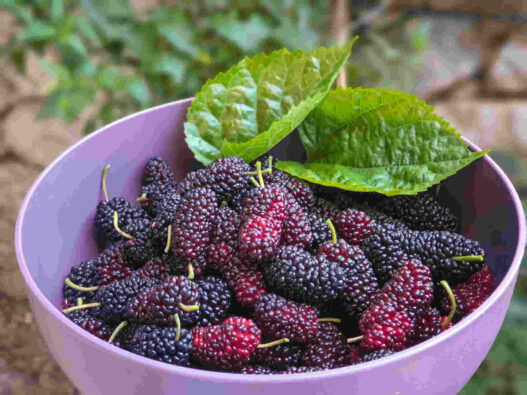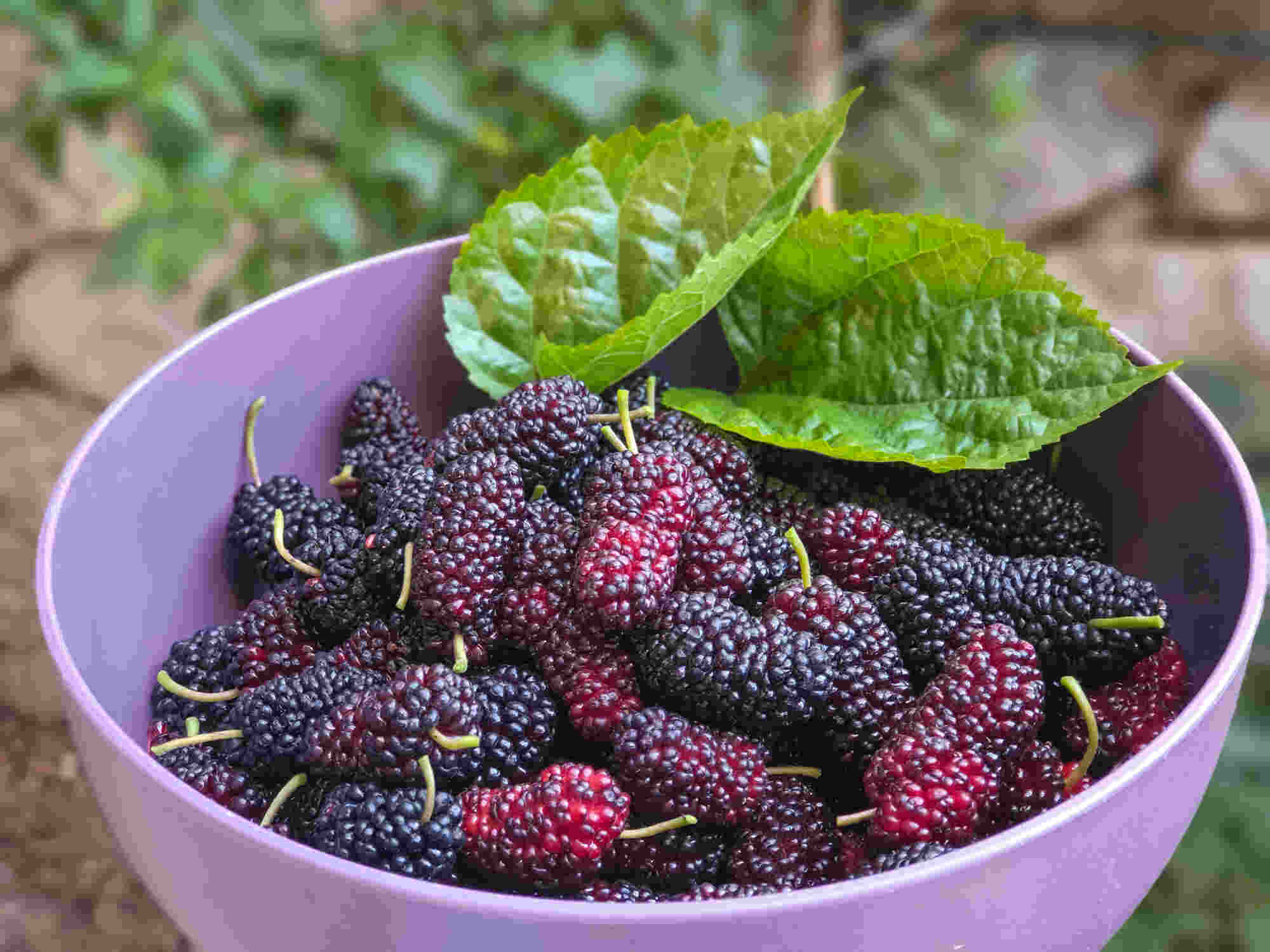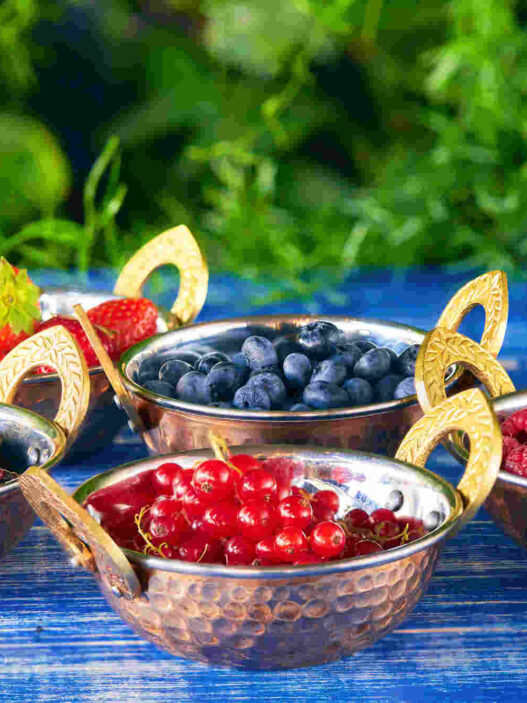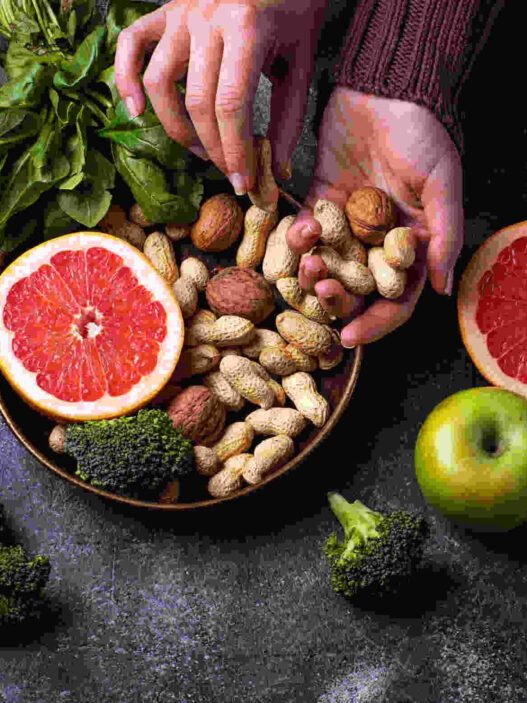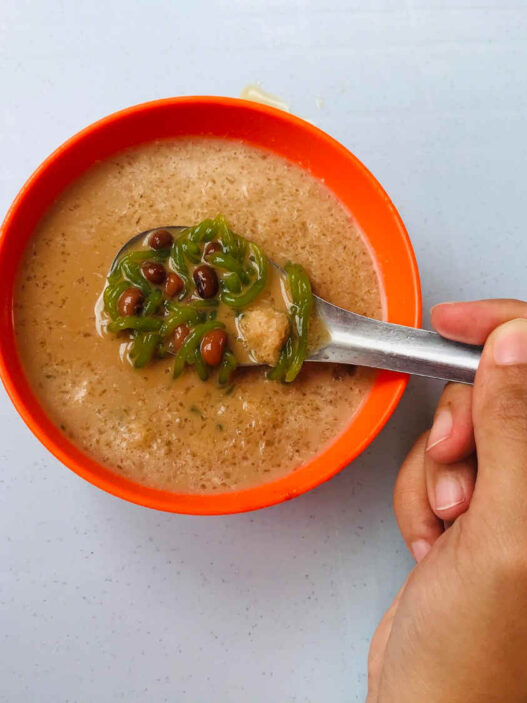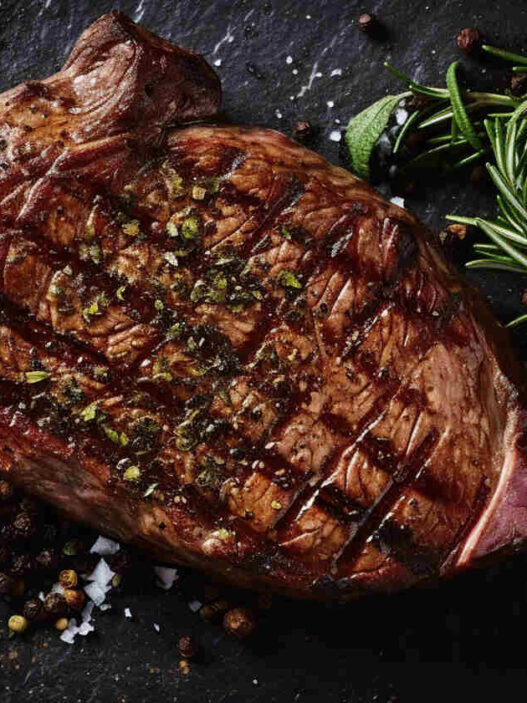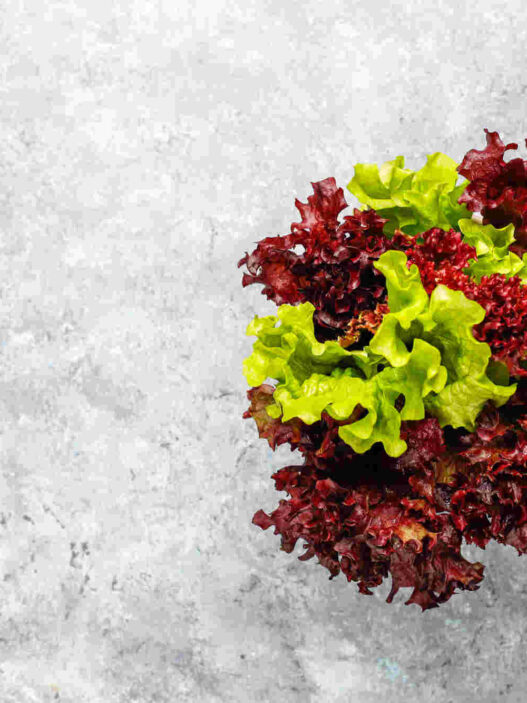All about mulberries, mulberry silk, tree and more.
Here we go round the mulberry bush, the mulberry bush, the mulberry bush. Hey, wait a sec—mulberries don’t grow on bushes! That children’s song is wrong. Our kids are misguided, but you won’t be. Don’t worry, this article isn’t an investigation into the song (though maybe it should be). As the heading suggests, we’re talking about mulberries, mulberry tree, mulberry silk and more, everything about them. We’ll explore how they’re grown, how they’re eaten, where to find them. If you’re not familiar with mulberries yet, get ready for a sweet ride!
What are mulberries and where they are found?
Mulberries are berries that have a blueberry, grape, and strawberry-like appearance. They have a sweet-tart taste and are mostly available in summer (we will talk about that).
It is believed that mulberries originated in East Asia, specifically in China, where they were/are used as key ingredients in medicines. They have a surprising role in silk production, which we will discuss later as well.
Nowadays, they are grown mainly in China, South Korea, India, Pakistan, and in many states in the USA (not all). They are easy to grow and yield within 2 years of planting.
Three main species that are very popular are White Mulberry (Morus alba), Black Mulberry (Morus nigra), and Red Mulberry (Morus rubra). However, there are more species like Sweet Lavender, Downing, Weeping, Illinois, and Russian, which are often named after the place of origin. But we will be focusing on these three species in this article.
While most people are familiar with the black or red varieties, mulberries can also be white. The white mulberry is particularly significant in silk production due to its role in feeding silkworms.
Mulberries Nutritional Properties
Mulberries are not just delicious; they are also packed with essential nutrients (1). They are mostly water (almost 88%), making them a great option for hydration. They are low in carbs, have fewer calories (45 kcal/100g), very low in fat, and contain 1.4% protein per 100g.
Mulberries are rich in vitamin C, vitamin K, vitamin E, and vitamin A. They are also rich in minerals like iron, magnesium, potassium, and calcium, which are essential for various bodily functions.
These berries are high in dietary fiber, making them an excellent choice for promoting digestive health and weight loss.
Furthermore, mulberries are rich in antioxidants like anthocyanins, which lower LDL and are beneficial against heart disease.
Chlorogenic acid in mulberries has protective effects against diabetes, cardiovascular disease, etc.
Rutin present in mulberries is considered good for aging skin, easing arthritis pain, etc.
Myricetin in mulberries has anti-inflammatory properties and stops the accumulation of triglycerides.
Cyanidin also has anti-inflammatory properties and is common in red apples, red cabbage, berries, oranges, etc.
Deep-colored and fully matured mulberries are considered highly beneficial and flavorful.
Health Benefits of Mulberries
Mulberry leaves have bioactive effects and anti-inflammatory properties (2). They are known for alleviating insulin resistance and regulating intestinal flora.
The extract and active components of mulberry fruit have antioxidant, antitumor, and neuroprotective properties. However, more research is needed. It has shown a decrease in oxidative stress in animal studies, but more human studies are required.
It was found that mulberry leaves exhibit a wide range of pharmacological activities, but limited studies have been conducted on the pharmacological activities of the fruit.
Animal studies showed a significant decrease in LDL cholesterol and liver triglycerides. Furthermore, when 5-10% of mulberry fruit powder was fed to rats, high-density lipoprotein (HDL) showed an increase.
Mulberries are not true berries but are actually multiple fruits formed from the flowering of the mulberry tree. Each “berry” is a cluster of smaller fruits.
In a similar study, when animals were fed a high-cholesterol diet along with mulberry fruit powder, it was found that there was a significant decrease in fatty deposits in the blood vessels.
A significant decrease in fasting glucose was found, indicating that mulberry has a positive effect on diabetes (3). High doses significantly improved glucose control.
As for obesity, large studies (4) are needed for any clear indication.
Some studies have shown that antioxidants (5) in mulberry have the potential to protect brain cells and reduce the risk of neurodegenerative disease.
Antioxidants in mulberry are considered good for skin health and are often regarded as beneficial for radiant and youthful skin.
While more studies are needed, some people suggest that mulberries are helpful in providing quality sleep as well.
Mulberries are sometimes referred to as a “superfruit” due to their high antioxidant content and nutritional value. They are rich in vitamins, minerals, and polyphenols, which can contribute to overall health
The major adverse effect is that we have no significant human studies to determine the effect of higher doses or what dose is safe for human consumption without side effects.
Diverse Uses of Mulberries
Mulberry Fruit and Juice for various delicacies
Mulberries are picked directly from the tree and can be eaten as they are. They can be stored in a container in the refrigerator for several days or washed, dried, and frozen for several months.
Mulberry juice is an essential ingredient in jelly, squash, jams, candies, etc. It can also be freshly consumed. It has a sweet-tart taste that may vary depending on the fruit.
Similarly, mulberries are popular ingredients in desserts, pies, cakes, ice cream, etc.
Mulberries are also used in flavorful wines and liquor, providing a distinctive flavor and fragrance.
Mulberries can even be dried and kept for an extended period. However, these may contain added sugar and preservatives, but they’re a good option for transporting the fruit over long distances.
Medicinal Properties
Mulberries are very popular in China for medicinal purposes, as they have anti-inflammatory, antioxidant, and digestive properties. Mulberries were used in ancient Greece and Rome both for their medicinal properties and as a food source. They were even mentioned by ancient scholars like Pliny the Elder.
Since ancient times, mulberries have been used in various Chinese medicines for treating liver and kidney ailments and for blood nourishment. They are also used in anti-aging tonics and eye drops, though these treatments still require scientific research.
Other Uses
Other surprising uses of mulberry include dyes (6). It is used in industrial dyes for textiles. Mulberry leaves are used for brown-green color (depending on pH). Interestingly, mulberry leaves are often used to identify the tree.
The mulberry tree is often confused with American basswood, which has a similar appearance but no fruits. Mulberry leaves are edible and often consumed for indigestion.
Mulberry tree bark is used for paper production, and the leaves are used as fodder for livestock.
Mulberry Silk
Silkworms feed on mulberry leaves. After consuming many leaves, these creatures form a special cocoon around themselves, which is called silk.
Mulberry silk is derived from the cocoons of silkworms that are exclusively fed on mulberry leaves. The extracted silk fibers are then woven into fabric, creating the luxurious material we know as mulberry silk (7).
What makes mulberry silk so special is because of softness and smoothness, which makes it ideal for bedsheets, clothing- especially sari (An Indian ethnic wear for women), scarves, bags and other textiles.
Mulberry silk are also considered very durable, that makes them last longer. Another reason mulberry silk is considered great for clothing is their breathability. Clothes made out of this silk are comfortable to wear for extended period especially at night. These also helps in temperature regulation.
However, Mulberry silk are often pricey due to high demands and good quality. Options like Eri silk, Tussar silk, etc. are considered when it comes to prices. Still, in terms of availability mulberry silk is more widely available, while other silks like Muga silk have limited availiblity.
Interestingly, this ancient connection between mulberries and silk production dates back over 5,000 years in China. Mulberry silk was also considered to have healing properties and was commonly used for medicinal purposes.
How mulberry tree is grown?
Mulberry trees are grown (8) like any other tree, with just some care needed at the initial stage.
The ideal temperature for optimal growth and bud sprouting is 24-28°C.
Some varieties can even withstand colder temperatures. After full growth, the tree can manage temperatures from 13°C to 37°C.
Mulberry trees prefer annual rainfall of 600 mm to 2500 mm.
These trees thrive in full sun but can tolerate partial shade. However, that can affect their yield. Improper sunlight can impact the quality of the fruit.
Fun fact: In some places in South Korea, there are large gardens where people can buy tickets and pluck as many mulberries as they can.
Interestingly, not all fruits will ripen at the same time; these fruits can be collected with just a gentle shake. The fruits will be large, sweet, and black when fully ripe.
Usually, for a mulberry tree, it takes 1 year to bear fruit, but a regular tree takes 3 years for sweeter fruit. When fully grown, they can even reach 60 feet in height.
Mulberry trees are adaptable to a wide range of soil types, including clay, sandy, and coarse soil. The pH should be 5-7.
A special feature of mulberry trees is that they help prevent soil erosion.
Mulberry Tree Watering Guidelines
For growth and fruit production, the tree needs 1 inch of water every week. Watering should be directed to the roots, ensuring they are soaked.
During a dry spell (9), the fruit may drop if there is insufficient water. Once established, the tree can tolerate drought.
Harvesting of Mulberry Tree
The harvest season starts in mid-June and continues until August. Fruits will be large and sweet when fully ripe. Normally, it’s easy to pick these fruits when the tree is not very tall in its first 1-3 years. However, with a gentle shake, the fruit can be easily collected from the ground.
Different types of mulberries may be harvested in different seasons (10).
Pruning of Mulberry Tree
Pruning is often done for healthy growth. In the case of mulberry trees, pruning should be done in late winter when the trees are dormant.
Five main cuts are sufficient for a healthy tree and growth.
Mulberry Tree Susceptibility to Diseases
Like any other tree, mulberry trees are susceptible to diseases. Some common diseases include:
- Root Rot: This can occur due to excessive water, poor drainage, or high moisture levels. Symptoms may include yellow leaves (often not easily detectable), wilted leaves, and stunted growth.
- Powdery Mildew: A common fungal disease, appearing as a white powdery substance on leaves and branches.
- Leaf Spot: Various bacterial and fungal infections can cause leaf spots, leading to premature leaf and fruit drop.
- Canker Disease: Bacterial and fungal cankers can cause branches and leaves to die and fall, potentially affecting fruit production.
- Fruit Rot: Caused by bacterial pathogens, this can lead to fruits rotting, falling prematurely, becoming tasteless, or even inedible.
Preventive Care
First, ensure that the tree is planted properly in the right spot with well-drained soil and adequate spacing for air circulation.
Pruning (as mentioned above) aids in growth and helps remove dead branches or leaves that may restrict the tree’s development and consume excess energy.
Proper sanitation and cleanliness can prevent the spread of diseased leaves. Additionally, avoid planting the tree near others that may hinder its growth.
Experts often use fungicides for fungal prevention, which should be applied correctly. A natural alternative could be a shampoo spray or neem oil spray to prevent bacterial growth.
Cultural Significance of the Mulberry Tree
Mulberry trees have cultural significance. In Asian culture, they are seen as symbols of longevity and prosperity.
Chinese paintings often depict mulberry trees as symbols of nature and culture.
In Japanese culture, the poem Tale of Genji (11) symbolizes the mulberry tree as a symbol of love and beauty.
Despite all these benefits and uses, mulberry trees are considered illegal in certain places in the USA.
Why mulberry trees are considered illegal?
There is so much mixed information about this that people are afraid to plant or eat mulberries. But the reality is quite different.
Mulberry trees are not exactly illegal (12) but are prohibited from being grown in some places like El Paso, Texas; Las Vegas, Nevada; Tucson, Arizona; and Albuquerque, New Mexico, which prohibit new trees within the town limits.
The main reason for this is the mulberry’s invasive nature. They spread very rapidly and can overshadow other trees and plants. Their fruits can also cause stains, which is why it is suggested to plant these trees away from public places like parking lots, walkways, etc.
Mulberry trees can also cause pollen trouble and trigger allergens for many people.
Ask your local authority for best practices and safe planting.
Conclusion
Today, we have learned a lot about mulberry trees. One thing is clear: they don’t grow on a bush.
Mulberries are sweet, delicious, and packed with benefits. Growing them might not be too difficult if you have a green thumb. Yes, they need care, but which tree doesn’t?
Is it illegal? Maybe not; check with your local authority. Some places sell the tree, and it can be planted in open spaces. Is it poisonous? Definitely not—mulberries are edible and safe. Their uses are diverse, and the tree holds great significance.
If you have any doubts, feel free to ask us on our social media handles.
See you around the mulberry tree!
Sources
- https://pubmed.ncbi.nlm.nih.gov/29129054/
- https://www.mdpi.com/2076-3921/7/5/69/
- https://pubmed.ncbi.nlm.nih.gov/37646143/
- https://pubmed.ncbi.nlm.nih.gov/31276774/
- https://pubmed.ncbi.nlm.nih.gov/36644880/
- https://www.researchgate.net/publication/272618174_Eco-Friendly_Dyeing_of_Cotton_Fabric_Using_Ultrasonic_Energy_with_Natural_Colorants_Extracted_from_Mulberry_Leaves
- https://www.fao.org/4/X9895E/x9895e0t.htm#:~:text=Mulberry%20(Morus%20spp.),the%20silkworm%20(Bombyx%20mori).
- https://www.foodgardenlife.com/learn/how-to-grow-mulberry
- https://pubmed.ncbi.nlm.nih.gov/23250728/
- https://www.starkbros.com/growing-guide/how-to-grow/fruit-trees/mulberry-trees/harvesting
- https://ssp.jst.go.jp/sns/news/life/202105.html
- https://www.greenmatters.com/living/why-are-mulberry-trees-illegal

Devang Upadhyaya is a content marketing professional with more than 250+ articles, helping people achieve their desired fitness through his blog “Fat Guy Workout.” He’s a young and passionate certified nutritionist with a knack for fitness and workout. He is dedicated to simplifying health and wellness, making it accessible and understandable for everyone.
